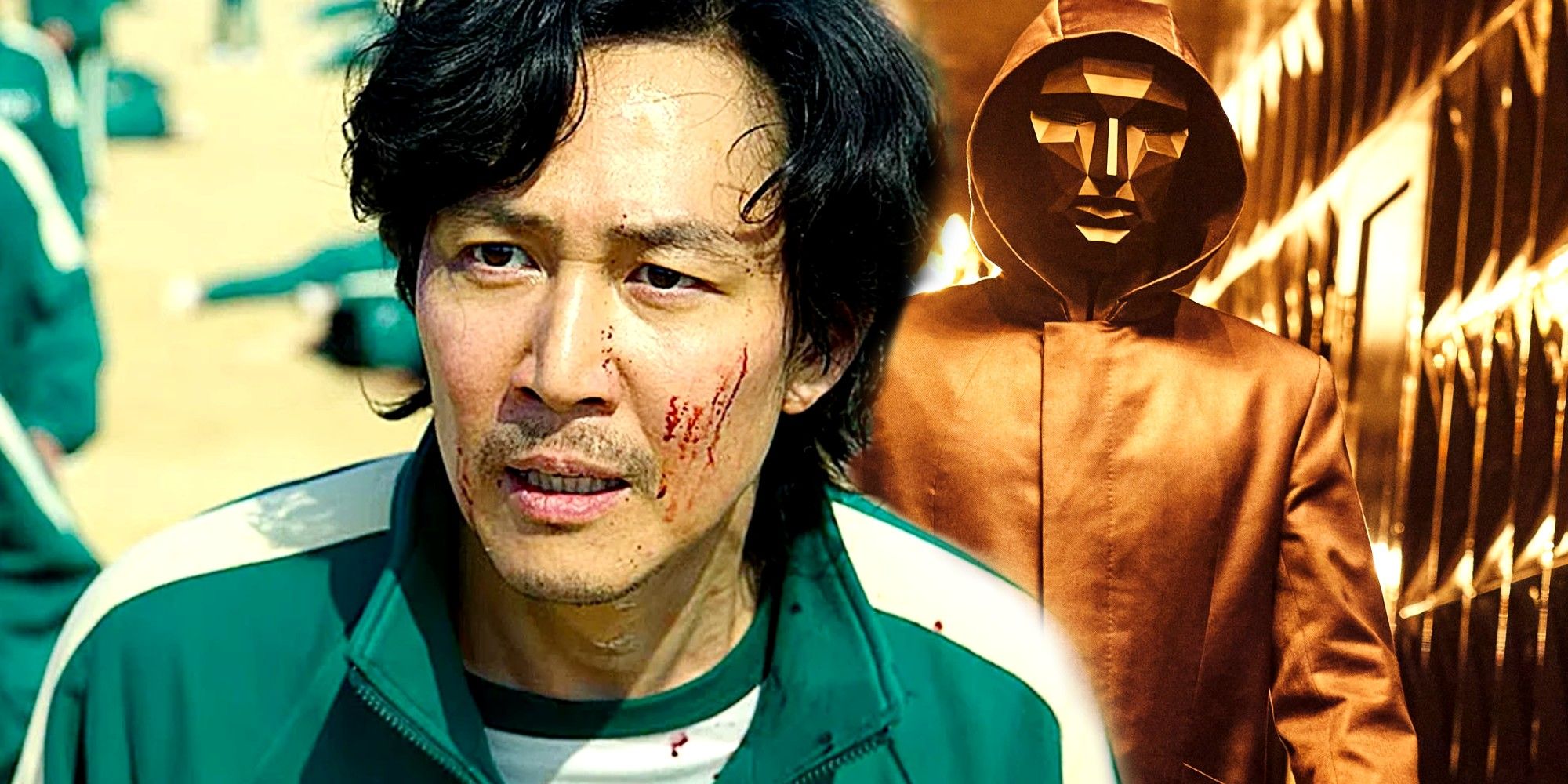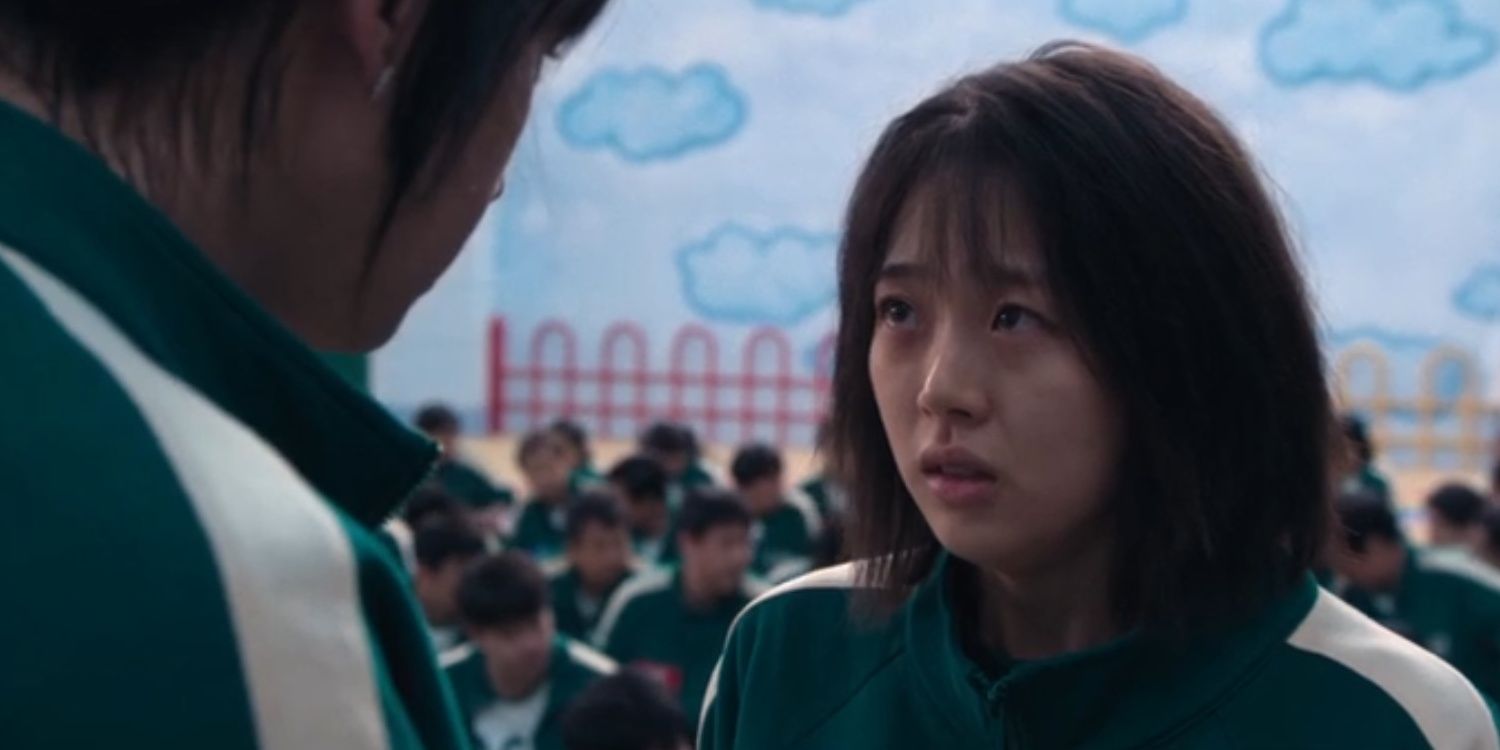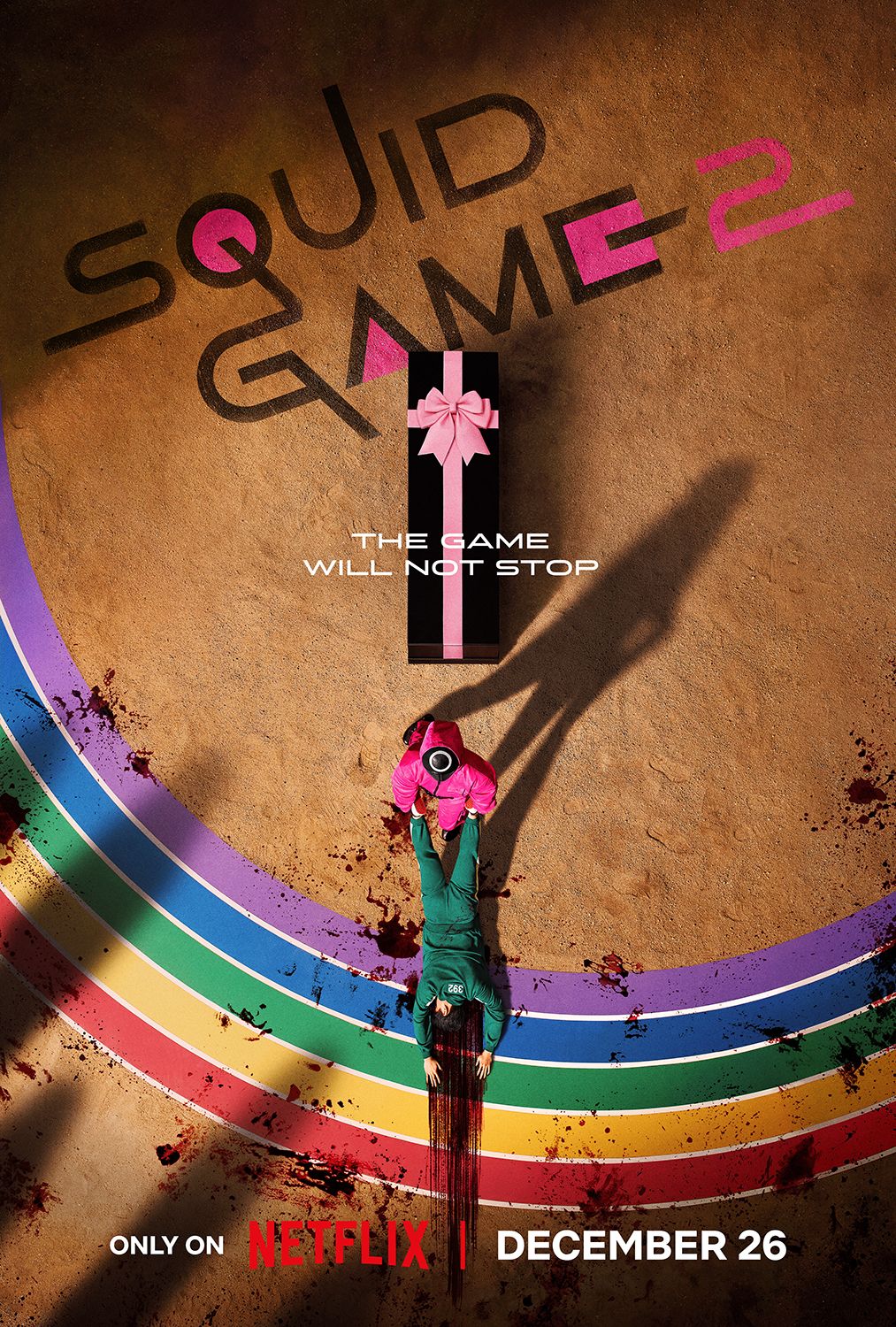The Emmy-winning production designer behind Squid Game, Chae Kyoung-sun, offers insight into the symbolic design of the six-legged race in season 2, episode 4 (“Six Legs”). Created by Hwang Dong-hyuk, the hit Netflix series follows the plight of those competing in a deadly series of childhood games to win a life-changing cash prize. When the Korean dystopian’s downtrodden protagonist, Seong Gi-hun (Lee Jung-jae), returns to the competition to end the game once and for all, several Squid Game‘s new twists, turns, and games await him, such as the Six-Legged Pentathlon.
In a recent behind-the-scenes featurette from Netflix, Chae explains the thematic significance of the rainbow design for the two circle tracks where teams of five raced simultaneously against the clock to complete a series of mini-games. Competitors cheered on teams on the racecourse as they played a game of ddakji, attempting to throw a spinning top. Others anxiously awaited their turn as teams were shot just steps before the finish line. Here’s what the designer had to say:
The director suggest creating two circles, and it got me thinking about the meaning of the rainbows. People say the path to heaven is decorated with rainbow colors. As you know, we wrapped the coffins like gifts. That was kind of a reflection of our tough, competitive reality in this world where so many people fail. People are tired of the harsh reality. So it was a way of wishing those who passed away a peaceful afterlife, where there would be no more pain. I think the rainbows share the same meaning as the coffins.
What The Six-Legged Race In Squid Game Means
A Haunting Intersection Of Child-Like Innocence & Mortality
The racecourse for the six-legged race is marked by two vibrant, complete circles of rainbow colors. On the walls there are baby-blue clouds, chalkboards with playful doodles and timetables, complete with desks and chairs that make the challenge feel like, as Chae described, “an elementary school festival.” Paired with the cheers for those like Jang Geum-ja completing a game of gonggi, the competition momentarily shrouds its life-or-death stakes with an air of childish whimsy. This illusion of innocence is quickly shattered when the timer runs out, and the penalties for failure reveal the brutal stakes lurking beneath its playful façade.
Related
Squid Game Season 2: Everything You Need To Know
Squid Game, the Korean Netflix phenomenon that took the world by storm in 2021, came back for season 2, and here’s everything we know.
Much like the pink bows that adorn the coffins of eliminated players, Chae bridges the grim reality of the competition with a simple peace-offering for the games’ casualties. Traditionally a token of joy and hope, the rainbows gain a cruel irony in this context, their circular form symbolizing the players’ endless struggle within a system designed to exploit and discard them. Much like the harsh, competitive rat race of the real world that the Squid Game games are meant to critique, the rainbows and bows offer no real escape—only fleeting moments of beauty in a cycle of despair.
Our Take On Chae’s Production Design
Pink Bows, Rainbows, & Weaponized Nostalgia
Squid Game has always nailed the art of mixing stunning visuals with gut-punching societal exploration, and the six-legged race is no exception. Chae Kyoung-sun’s playful designs continue to create a wild contrast to the fatality of the competition. It’s this blend of childlike innocence and brutality that makes the show so unforgettable, as viewers are forced to reconsider the nature of humanity and the behaviors that society forces us into. It’s this attention to detail that continues to set Squid Game apart as a chilling, but always well-dressed, allegory of a modern capitalistic society.
Source: Netflix/YouTube



